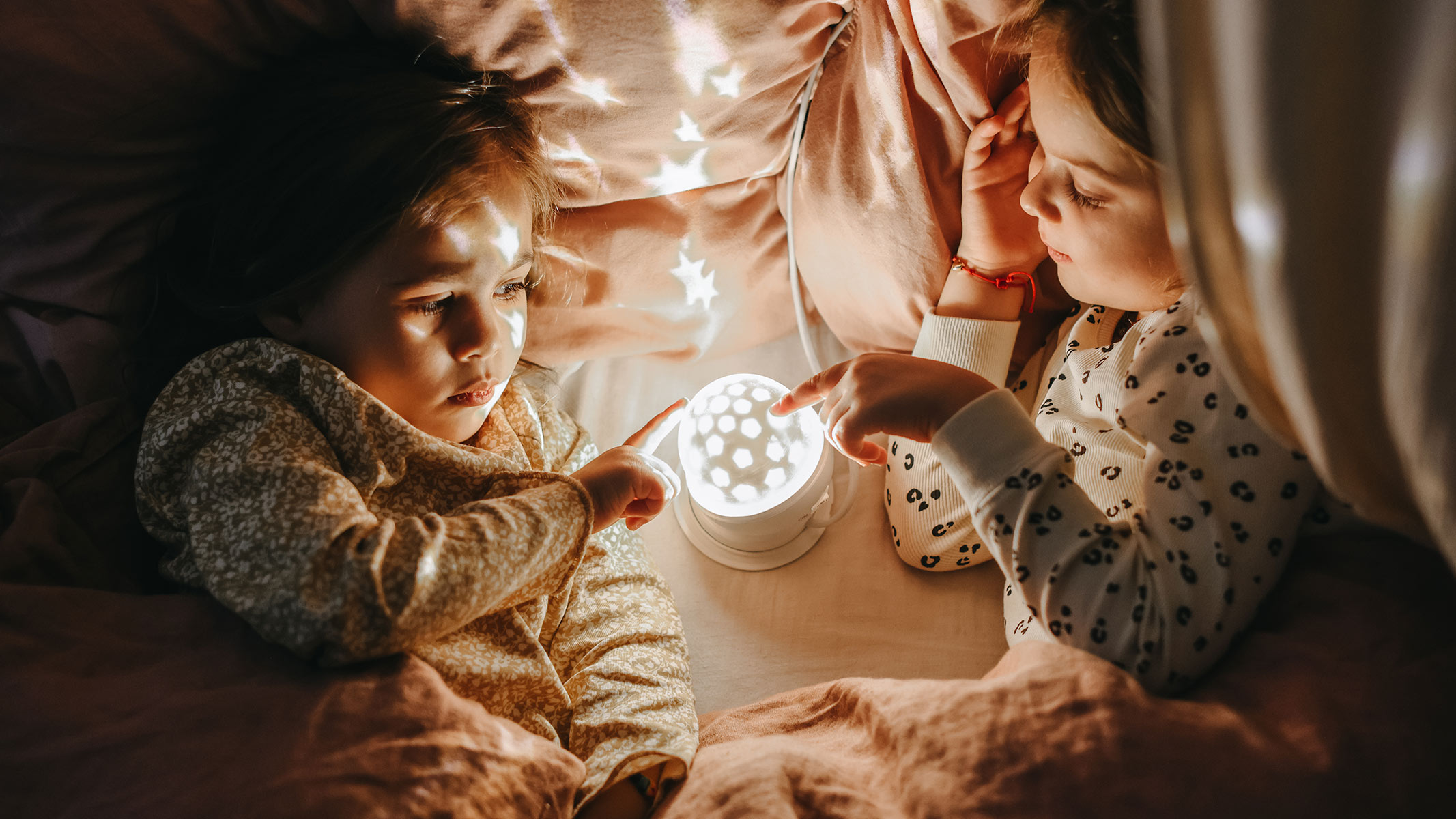Northern lights (aurora borealis): what they are and how to see them
The northern lights are one of the most mesmerizing natural wonders you can witness firsthand.
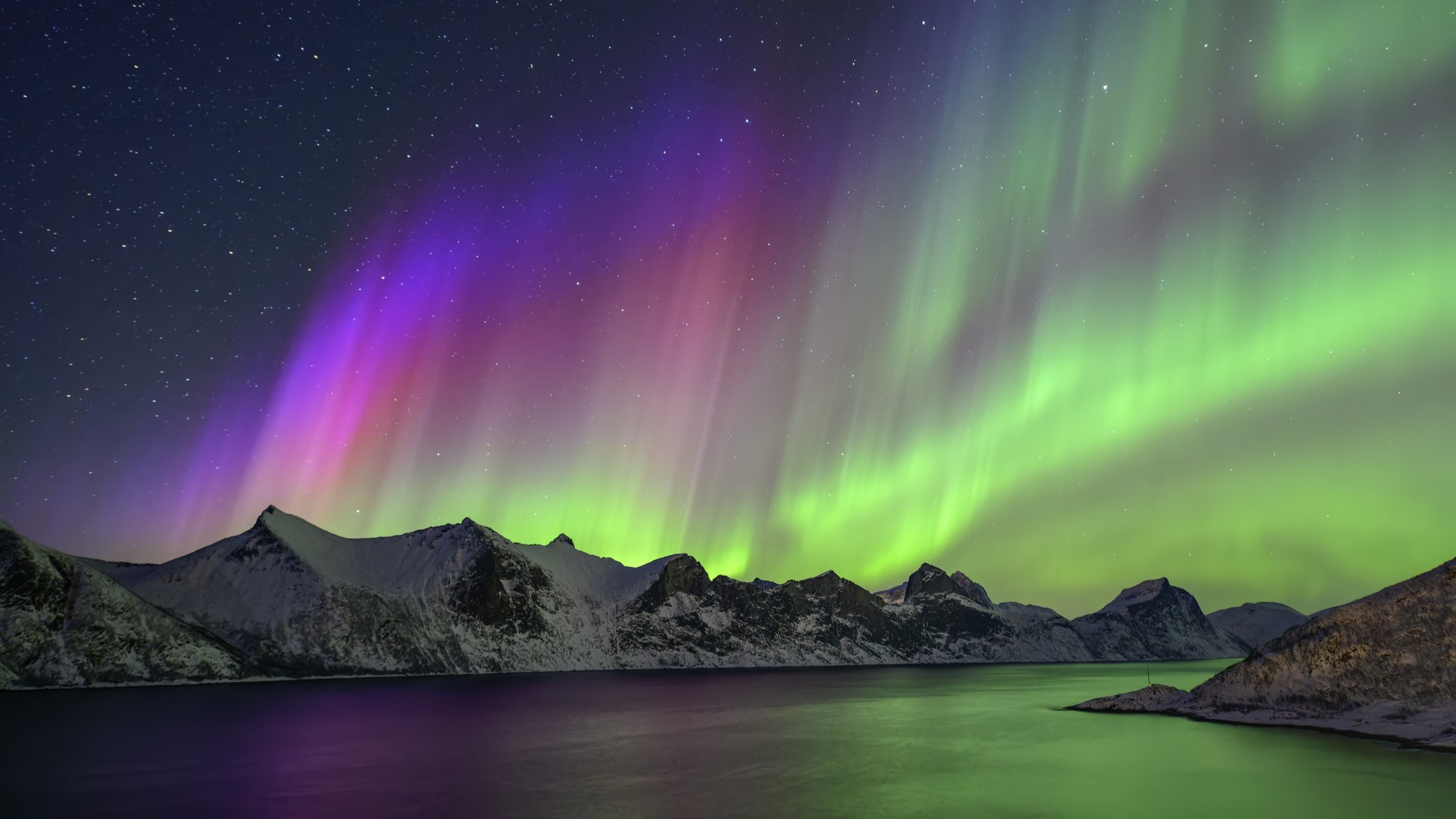
The northern lights, also known as the aurora borealis, are mesmerizing ribbons of light that have fascinated humanity for thousands of years. Despite their serene beauty, this breathtaking display results from a highly energetic and turbulent process.
The aurora forms when charged particles from the sun collide with Earth's upper atmosphere at incredible speeds — up to 45 million mph (72 million kph). Thankfully, our planet's magnetic field acts as a protective shield, preventing these solar particles from causing harm while creating the stunning spectacle we know as the northern lights.
As Earth's magnetic field redirects the particles toward the poles — there are southern lights, too, which you can read about below — the dramatic process transforms into a cinematic atmospheric phenomenon that dazzles and fascinates scientists and skywatchers alike.

Daisy Dobrijevic is an experienced writer and aurora enthusiast, having authored numerous guides on the northern lights, including "Where are the best places to see them?" and "What causes their colors" while also ensuring the aurora forecast live blog is always up to date. Her expertise is rooted in firsthand experience from multiple aurora-chasing adventures. She has explored the Arctic Circle extensively, including Norway's dramatic coastline with Hurtigruten, Sweden's renowned Abisko National Park, and the stunning Vesterålen archipelago in Norway. Driven by a deep passion for the northern lights, Dobrijevic describes the experience of seeing them in person as nothing short of magical — an awe-inspiring phenomenon that every person should witness at least once in their lifetime.
What causes the northern lights?
The northern lights give us a unique window into our sun's activity, space weather and Earth's magnetic field.
At any given moment, the sun is ejecting charged particles from its corona, or upper atmosphere, creating the solar wind. When that wind slams into Earth's ionosphere, or upper atmosphere, the aurora is born. In the Northern Hemisphere, the phenomenon is called the northern lights (aurora borealis), while in the Southern Hemisphere, it's called the southern lights (aurora australis).
"These particles are deflected towards the poles of Earth by our planet's magnetic field and interact with our atmosphere, depositing energy and causing the atmosphere to fluoresce," Billy Teets, the director of Dyer Observatory at Vanderbilt University in Nashville, Tennessee told Space.com.
The bright colors of the northern lights are dictated by the chemical composition of Earth's atmosphere.
"Every type of atom or molecule, whether it's atomic hydrogen or a molecule like carbon dioxide, absorbs and radiates its own unique set of colors, which is analogous to how every human being has a unique set of fingerprints," Teets told Space.com.
"Some of the dominant colors seen in aurorae are red, a hue produced by the nitrogen molecules, and green, which is produced by oxygen molecules." Teet continued.
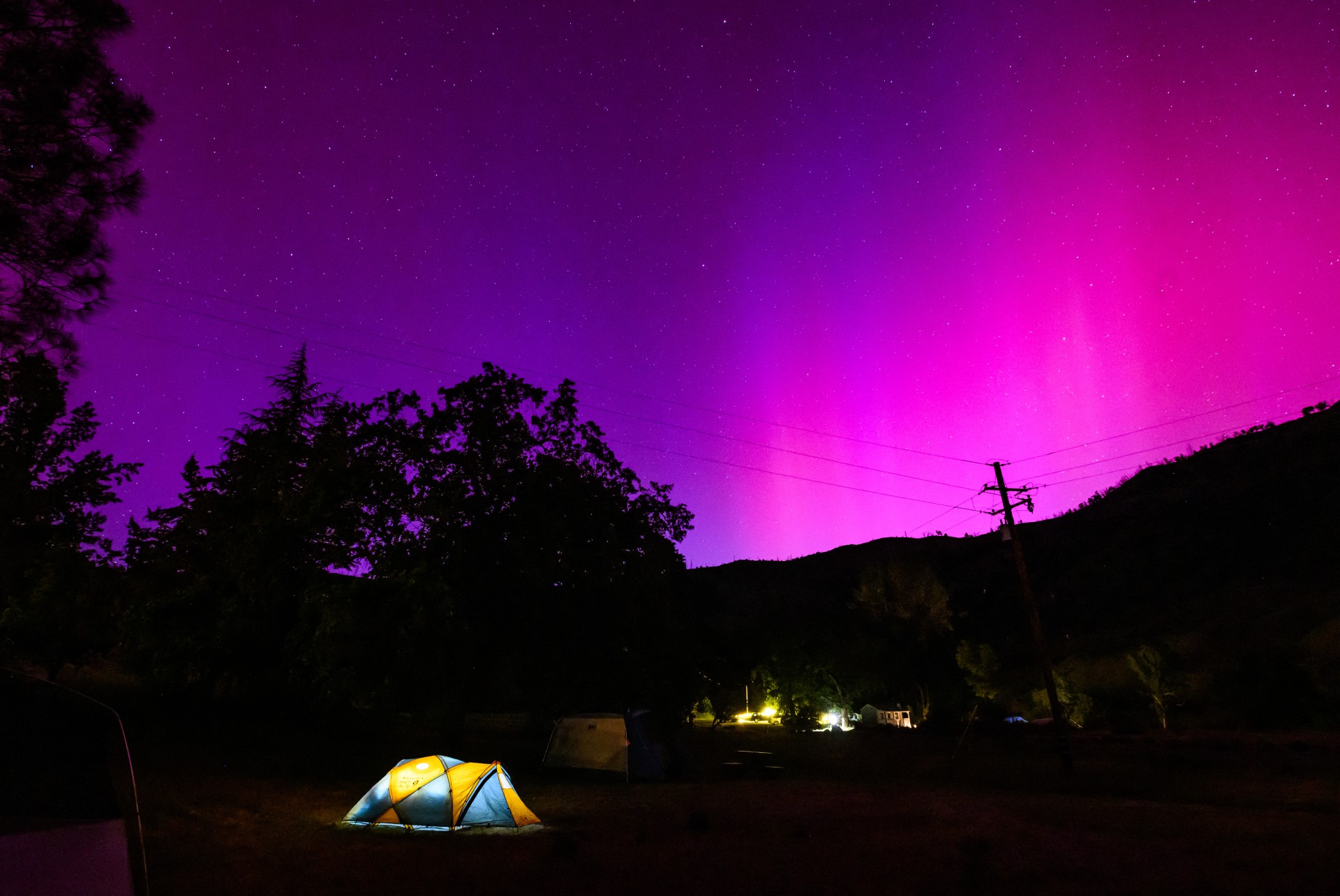
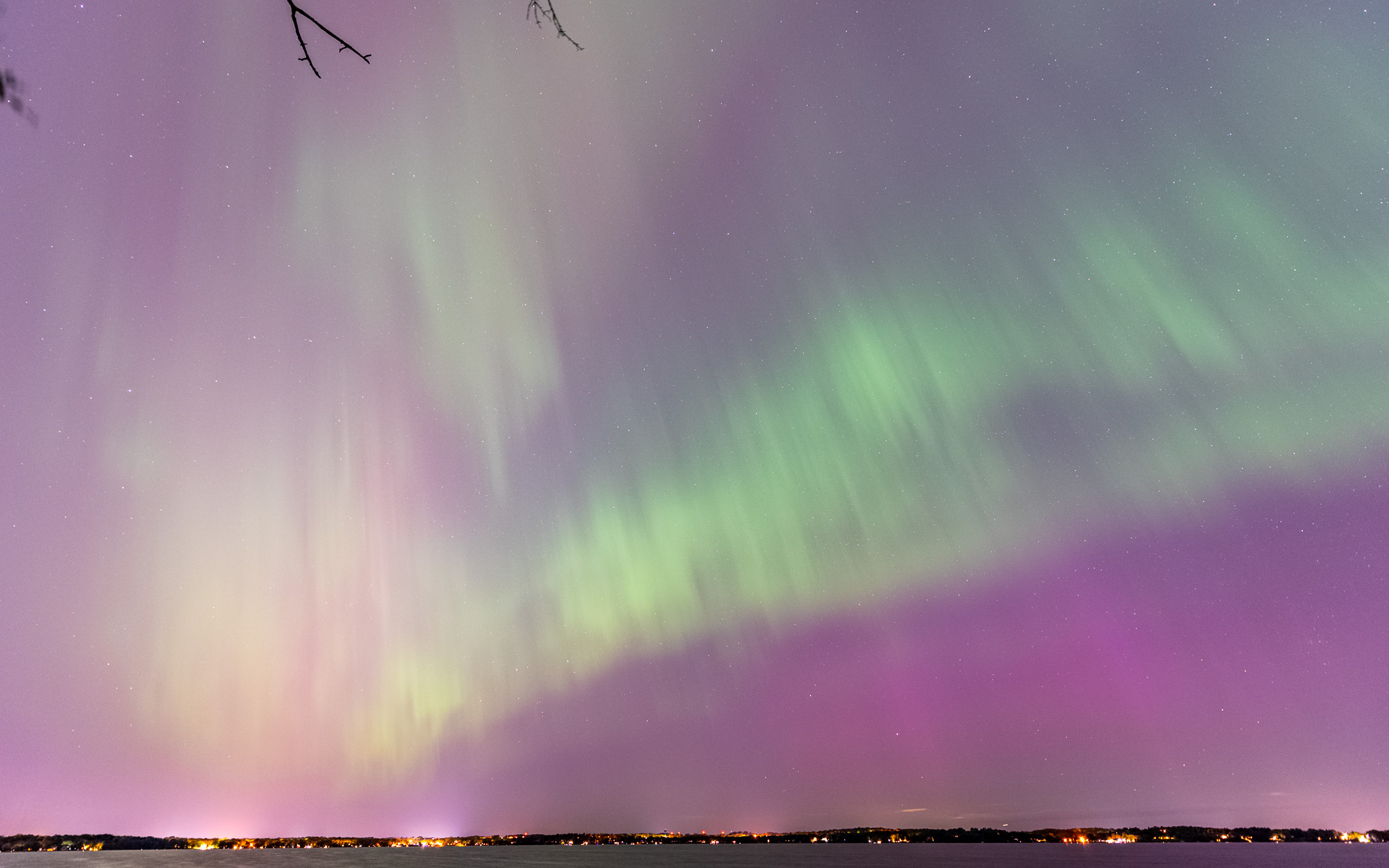
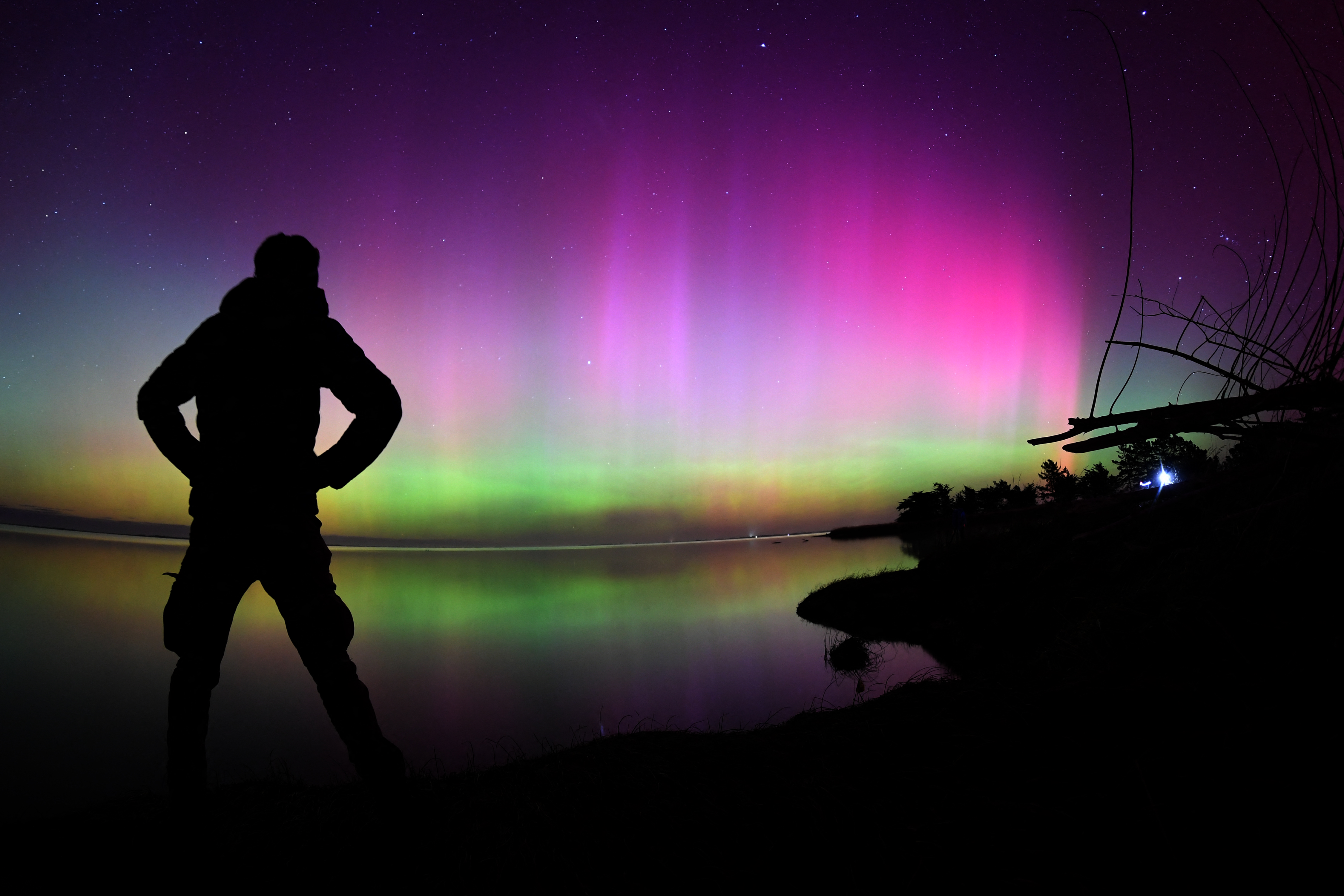
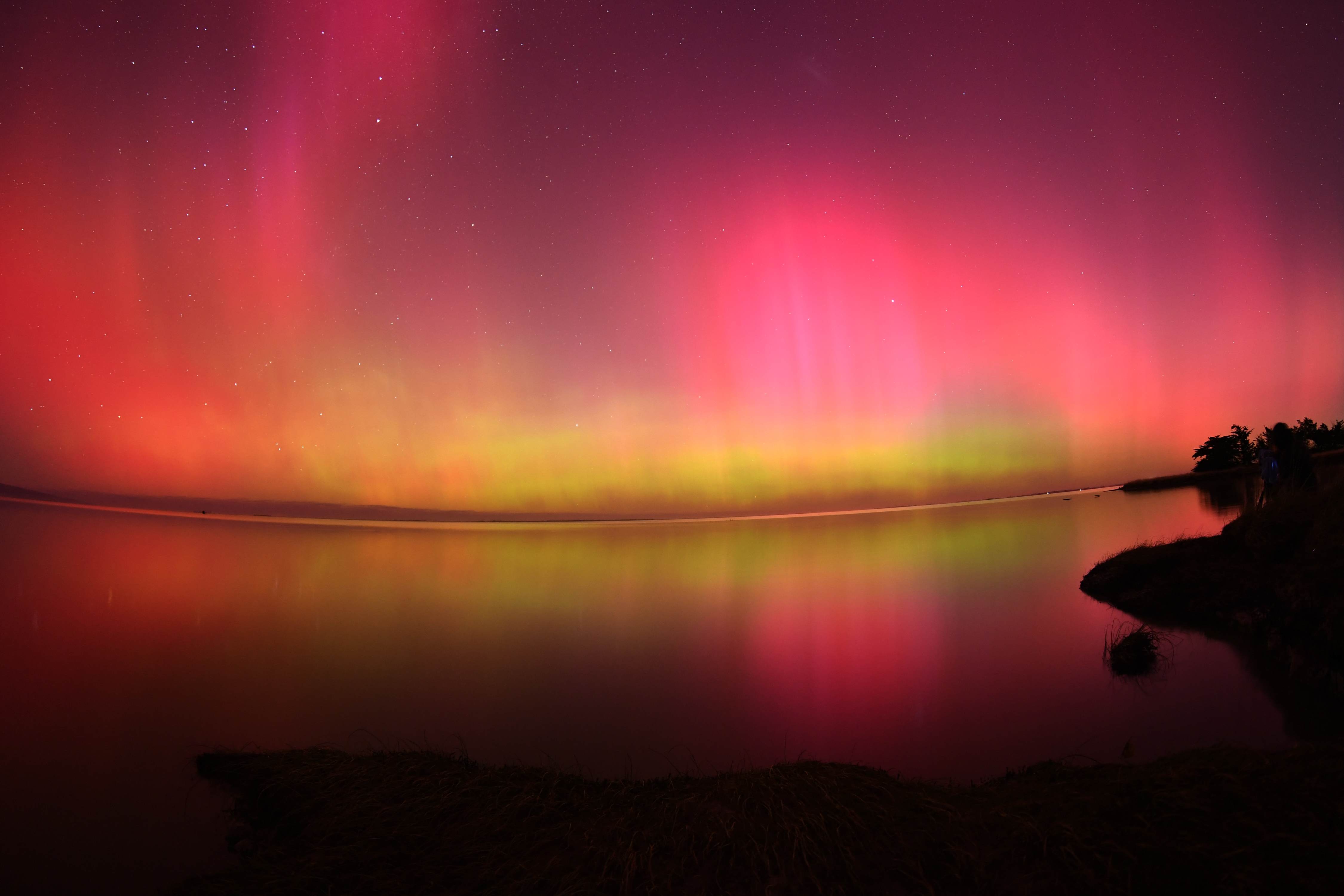
Northern lights FAQs
We asked Dr. Elizabeth MacDonald a few frequently asked questions about auroras.
Dr. Elizabeth MacDonald is a space physicist at NASA Goddard Space Flight Center and one of the founders of the citizen science site Aurorasaurus.
What causes the movement and shape of auroras?
Constantly changing input from the sun, varying responses from the Earth's upper atmosphere, and the motion of the planet and particles in near-Earth space all conspired to cause different auroral motions and shapes. From these motions and shapes, we can learn about the physics happening further out in space along the Earth's magnetic field lines.
What do auroras tell us about Earth's atmosphere?
Auroras tell us many things about Earth's upper atmosphere, including its density, composition, flow speeds, and the strength of electrical currents flowing in the upper atmosphere. These in turn tell us about the Earth's magnetic field, how it extends into space, and how it changes dynamically. All of this is important for protecting Earth and space-borne technologies from hazards of "space weather" of which aurora is one part.
Do we have auroras on other planets?
Yes! Aurora indicates planets with magnetic fields and atmospheres, which vary a lot compared to Earth.
Northern lights and solar maximum

While solar wind is constant, the sun's emissions go through a roughly 11-year cycle of activity. Sometimes there's a lull, but other times, there are vast storms that bombard Earth with extreme amounts of energy. This is when the northern lights are at their brightest and most frequent.
If you're planning an aurora hunting trip now is the time as "the next few years will be the most favorable for auroral sightings," Clette continued.
Lucky for aurora hunters, we are currently experiencing the solar maximum period. However, we won't know when the exact month of solar maximum occurred until 7 months after the fact.
Those wishing to see the northern lights will also be happy to hear that while aurora activity is high during solar maximum it actually peaks a couple of years after solar maximum. So the best northern lights are yet to come! Experts say the 2026-2027 aurora season is the big one so mark your diaries!
Read more: Aurora activity is just getting started. Here's why the best northern lights are yet to come.
Where and when to see the northern lights
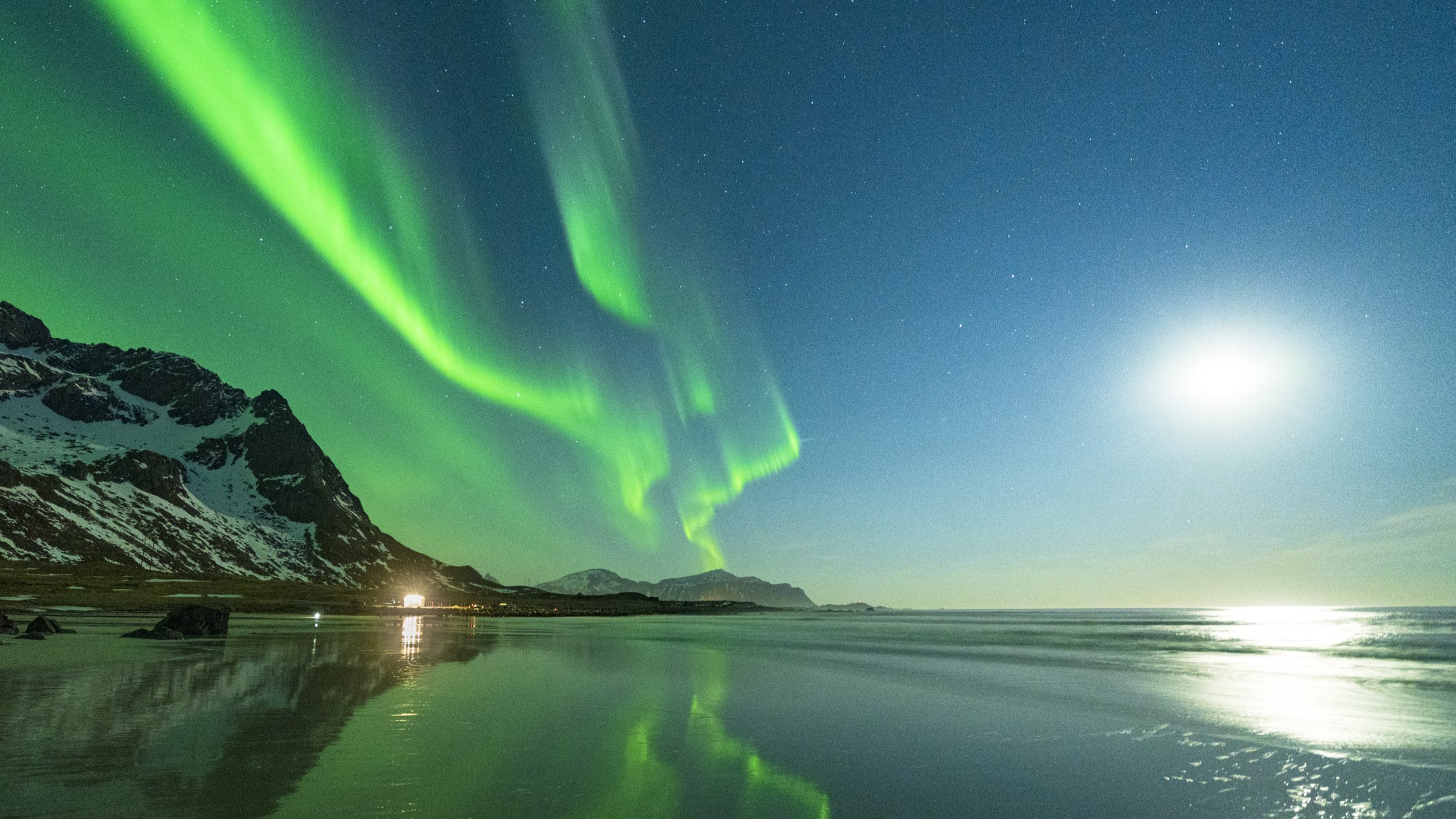
Best places to see the northern lights
To give yourself the best chance of seeing the northern lights check out our aurora forecast live blog designed to keep you informed of any significant geomagnetic activity as well as daily northern lights predictions.
Related: Where and when to see the northern lights this year.
Seeing the northern lights with your own eyes is a bucket-list item for astronomy lovers and travelers alike. Fortunately for us, they occur frequently.
"The northern lights are happening 24 hours a day, seven days a week, 365 days a year," said photographer Chad Blakely, owner of the northern lights tour company Lights Over Lapland. But that doesn't mean they're easy to spot; you need to be at the right place at the right time.
The best place to see the northern lights is any destination in the "auroral zone," the area within an approximately 1,550-mile (2,500 kilometers) radius of the North Pole, according to the Tromsø Geophysical Observatory in Norway. That's where the aurora most frequently occurs, though the phenomenon can creep farther south during particularly strong solar storms.
Related: Northern lights webcams: Watch the aurora borealis online for free
If planning a trip to see the northern lights, I highly recommend Hurtigruten's Astronomy Voyage which combines northern lights viewing, astronomy lectures and the beautiful Norwegian coastline. You can read all about what it's like onboard in my article "What it's like to chase the northern lights along Norway's dramatic coastline". If you don't have much time available but want an experience that combines northern lights and beautiful Norwegian culture I recommend a trip with the Northern Lights Company to the stunning Vesterålen archipelago. Looking for the best chance of clear skies? Try putting Sweden's "cloud-busting weapon" to the test in Abisko National Park, I did, and I wasn't disappointed.
Best time of year for northern lights
The best time of year to see the northern lights is between September and April, when the sky gets dark enough to see the aurora. (Far northern locales experience the midnight sun, or 24 hours of daylight in the summer.) March is generally considered the best month for auroras as March experiences more geomagnetically active days than any other month of the year, October is a close second.
In terms of the best time for the northern lights, the most action usually happens between 9 p.m. and 3 a.m., according to the Geophysical Institute of the University of Alaska Fairbanks. But remember to check local weather forecasts too because you won't be able to spot the aurora through thick clouds.
You can also monitor aurora forecasts from the University of Alaska Fairbanks' Geophysical Institute and NOAA, which offers both three-day and 30-minute forecasts.
When you're planning an aurora trip don't worry too much about the full moon. While there are various articles online telling aurora hunters to steer clear of nights illuminated by a bright moon, I can personally attest that if the aurora is strong enough, it won't ruin your chances of seeing them. In fact, it can enhance your experience, by illuminating the landscape and allowing you to fully appreciate your surroundings.
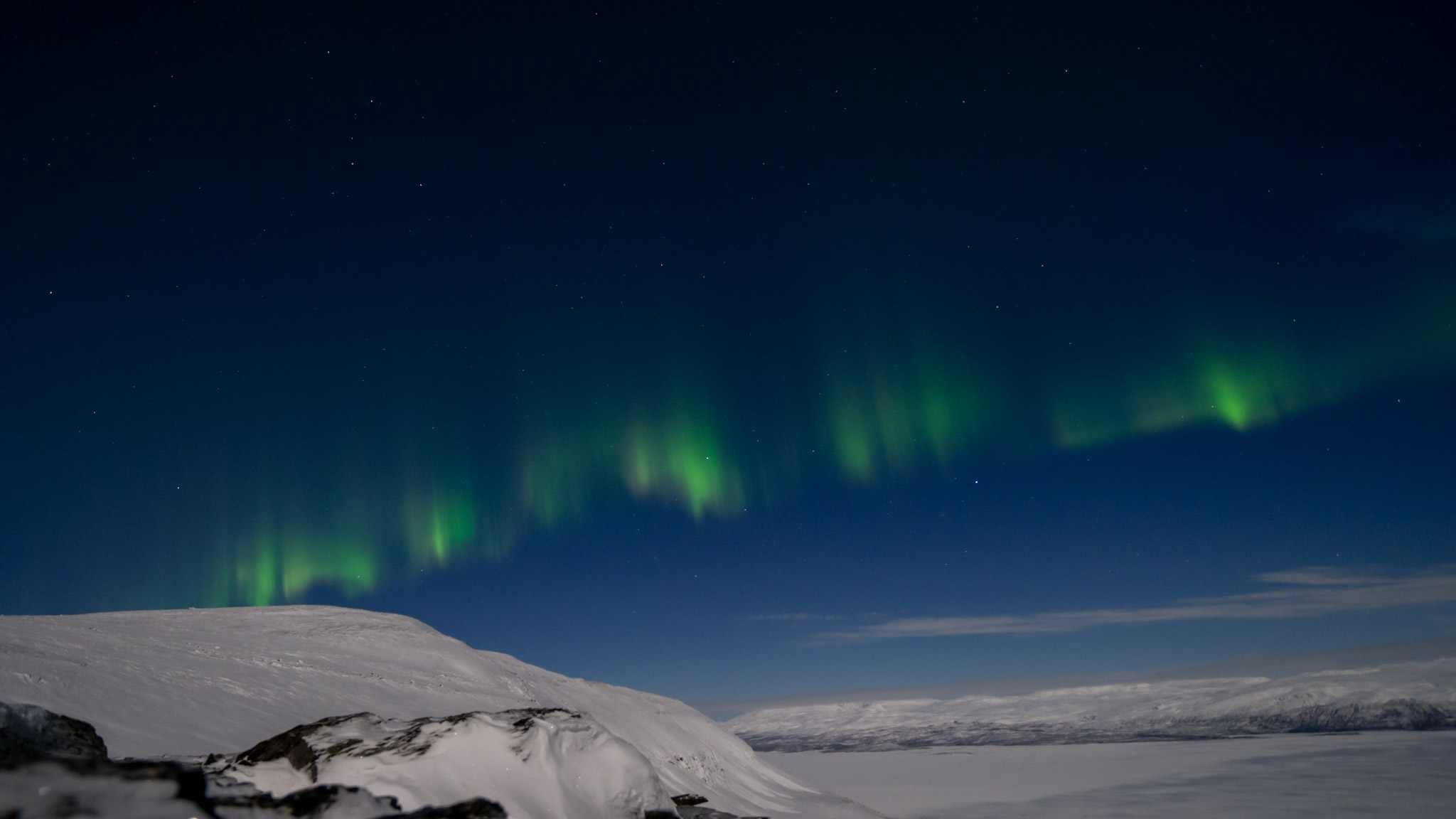
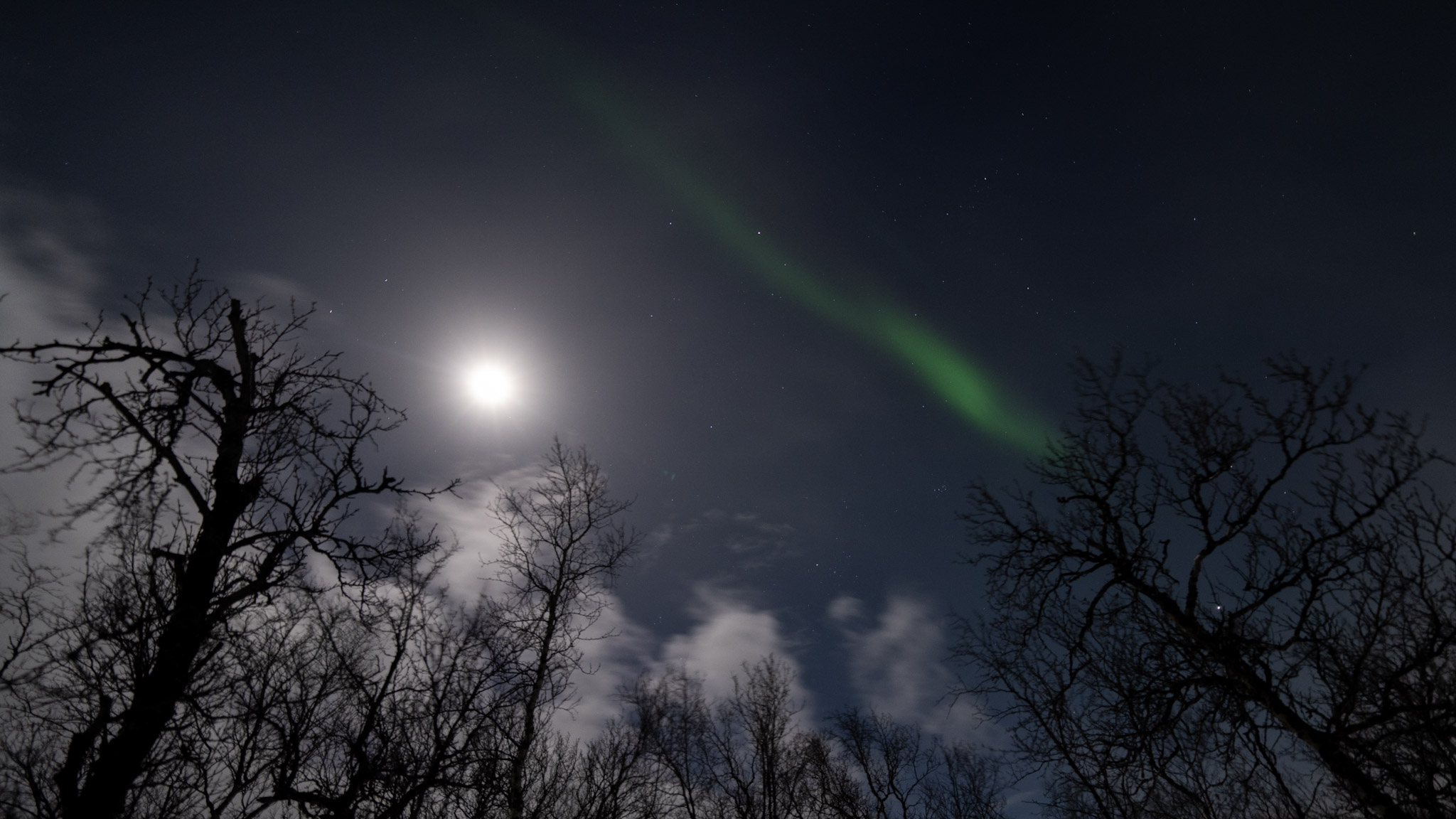
Difference between northern lights and southern lights
On Earth, the northern lights' counterpart in the Southern Hemisphere is the southern lights — they are physically the same and differ only in their location. As such, scientists expect them to occur simultaneously during a solar storm, but sometimes the onset of one lags behind the other.
"One of the more challenging aspects of nightside aurorae involves the comparison of the aurora borealis with the aurora australis," said Steven Petrinec, a physicist at the aerospace company Lockheed Martin who specializes in magnetospheric and heliospheric physics told Space.com.
"While some auroral emissions occur in both hemispheres at the same magnetic local time, other emissions appear in opposing sectors in the two hemispheres at different times — for example, pre-midnight in the Northern Hemisphere and post-midnight in the Southern Hemisphere," Petrinec told Space.com.
The hemispheric asymmetry of the aurora is due in part to the sun's magnetic field interfering with Earth's magnetic field, but research into the phenomenon is ongoing.
Introducing STEVE
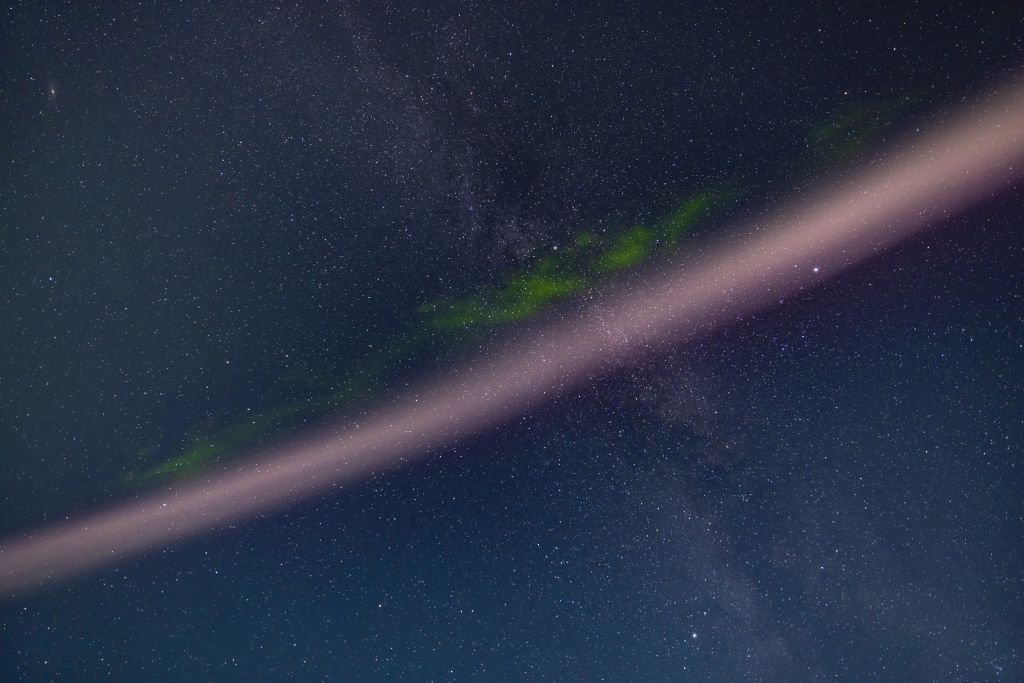
Another aurora-like occurrence on Earth is STEVE ("Strong Thermal Emission Velocity Enhancement"). Like the northern and southern lights, STEVE is a glowing atmospheric phenomenon, but it looks slightly different from its undulating auroral counterparts. "These emissions appear as a narrow and distinct arc, are typically purple in color and often include a green picket-fence structure that slowly moves westward," Petrinec said.
STEVE is also visible from lower latitudes, closer to the equator, than the auroras.
A 2019 study published in the journal Geophysical Research Letters discovered that STEVE is the result of two mechanisms: The mauve streaks are caused by the heating of charged particles in the upper atmosphere, while the picket-fence structure results from electrons falling into the atmosphere. The latter process is the same driver of the aurora, making STEVE a special kind of aurora hybrid.

Auroras on other planets
Auroras occur on other planets, too — all that's required to make an aurora is an atmosphere and a magnetic field.
"Auroras have been seen in the atmospheres of all the gas giant planets, which is not surprising, since these planets all have robust magnetic fields," said Jeff Regester, an instructor of physics and astronomy at High Point University in North Carolina. "More surprisingly, auroras have also been discovered on both Venus and Mars, both of which have very weak magnetic fields."
Indeed, scientists have cataloged three different types of Martian auroras. One occurs only on the planet's dayside, another is a widespread nighttime feature fueled by strong solar storms and another is a much patchier nightside phenomenon.
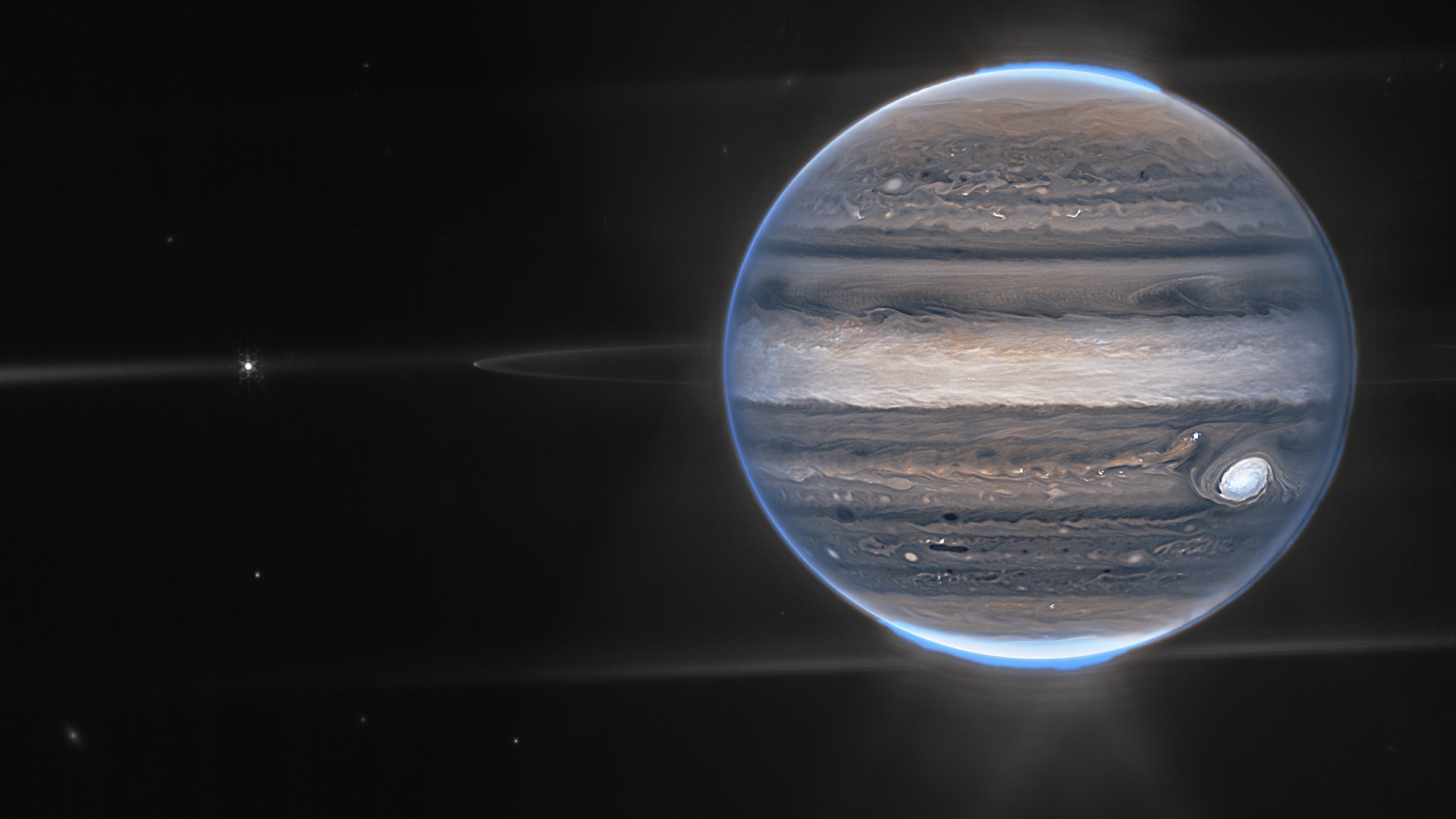
The Hope Mars orbiter, the United Arab Emirates' first-ever interplanetary mission, managed to capture the discrete nocturnal aurora shortly after arriving at the Red Planet in early 2021. The probe's observations could help scientists better understand this mysterious phenomenon.
Jupiter's magnetic field is 20,000 times stronger than that of Earth, so the giant planet's auroras are far brighter than the ones that blaze in our skies. And the Jupiter lights aren't just driven by the solar wind: Most of the particles that cause the planet's auroras are blasted into space by its close-orbiting moon Io, the most volcanic body in the solar system.
Astronomers have even caught glimpses of apparent auroral activity in other solar systems. For example, two October 2021 studies reported the detection of radio waves emitted by multiple red dwarfs, stars smaller and dimmer than our own sun.
These radio waves are likely associated with a sort of "backward" aurora, one that flares up near stars and is driven by particles released by close-orbiting planets, researchers said.
"Our model for this radio emission from our stars is a scaled-up version of Jupiter and Io, with a planet enveloped in the magnetic field of a star, feeding material into vast currents that similarly power bright aurorae," Joseph Callingham, a radio astronomer at Leiden University in the Netherlands and the Dutch national observatory ASTRON and co-author on both new studies, said in a statement. "It's a spectacle that has attracted our attention from light-years away."
These feeder planets remain hypothetical at the moment; nobody has yet discovered any circling the red dwarfs that the team studied. But if Callingham and his colleagues are right, astronomers may have a powerful new planet-hunting technique at their disposal.
Auroras are expected to be relatively common in the skies of exoplanets as well. But we'll have to get better looks at these faraway worlds to see their light shows directly.
The history of the northern lights
Though it was Italian astronomer Galileo Galilei who coined the name "aurora borealis" in 1619 — after the Roman goddess of dawn, Aurora, and the Greek god of the north wind, Boreas — the earliest suspected record of the northern lights is in a 30,000-year-old cave painting in France.
Since that time, civilizations around the world have marveled at the celestial phenomenon, ascribing all sorts of origin myths to the dancing lights. One North American Inuit legend suggests that the northern lights are spirits playing ball with a walrus head, while the Vikings thought the phenomenon was light reflecting off the armor of the Valkyrie, the supernatural maidens who brought warriors into the afterlife.
Related: Aurora myths, legends and misconceptions
Early astronomers also mentioned the northern lights in their records. A royal astronomer under Babylon's King Nebuchadnezzar II inscribed his report of the phenomenon on a tablet dated to 567 B.C., for example, while a Chinese report from 193 B.C. also notes the aurora, according to NASA.
The science behind the northern lights wasn't theorized until the turn of the 20th century. Norwegian scientist Kristian Birkeland proposed that electrons emitted from sunspots produced the atmospheric lights after being guided toward the poles by Earth's magnetic field. The theory would eventually prove correct, but not until long after Birkeland's 1917 death.
Photographing the northern lights
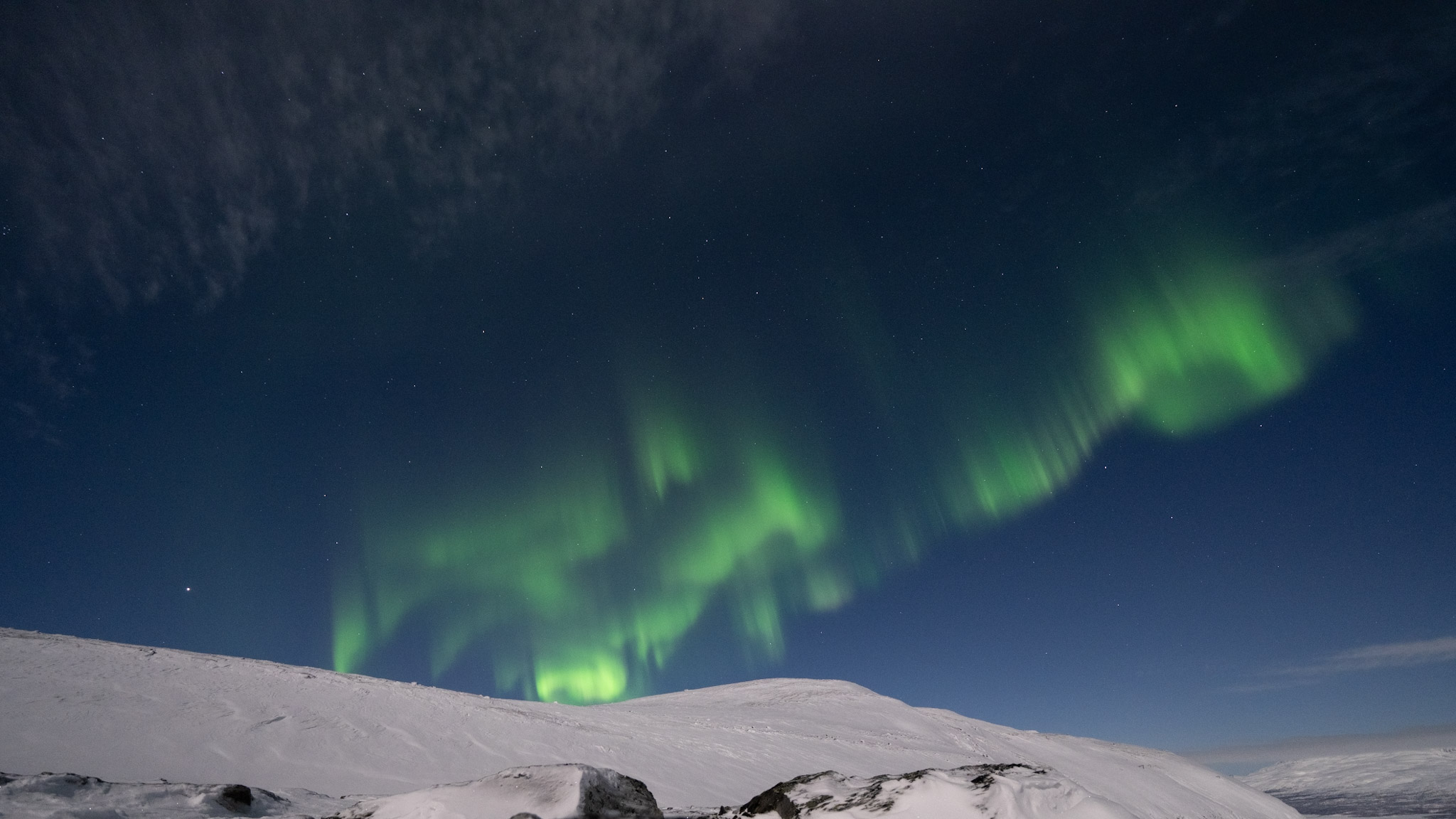
The northern lights are a popular target for budding photographers and it's easy to see why. Their colorful ribbons of light, dancing to the whims of Earth's magnetic field are a truly stunning sight. But aurora photography is not without its challenges. Low light, cold temperatures and the unpredictable nature of auroras make them a rather tricky subject. That's why we have created a "Where and how to photograph the aurora" guide that includes the best techniques and camera settings to help you get started.
Speaking from experience, it is one of the most rewarding photography targets you can set your sights on. When the ribbons of light start dancing for you, the feeling of awe and wonder is truly extraordinary. I recommend using a remote camera trigger to capture your photos, that way you can line up your camera for the perfect shot, sit back, relax and enjoy. It also means you can keep your hands nice and warm in your pockets, poised on the trigger, rather than fumbling around in the cold with the camera's shutter button.
While it's so tempting to stand and take hundreds of photographs at a time, it's important to take a step back from your camera, look up, and just enjoy the wonders of the northern lights or southern lights as they dance above you. The depth and movement that your eyes can capture are second to none.
Additional resources
You can learn more about the northern lights at NASA's aurora page. NOAA's Space Weather Prediction Center provides a 30-minute aurora forecast. You can watch livestreams of the northern lights via Explore.org and Lights over Lapland's webcam page
If you're an avid aurora chaser or want to learn more about sightings all over the world, Aurorasaurus is a citizen science site where you can report your aurora sightings and also learn more about auroras with their informative blog.
If you want to read more about Kristian Birkeland, check out "The Northern Lights: The True Story of the Man Who Unlocked the Secrets of the Aurora Borealis" (Vintage, 2002), by Lucy Jago. And you can keep up to date on NASA's sun-kissing Parker Solar Probe mission by following its blog.
Bibliography
Barton, K. "Legends of the northern lights," CBC News, Dec. 10, 2019. https://newsinteractives.cbc.ca/longform/legends-of-the-northern-lights
Callingham J. et al. "The population of M dwarfs observed at low radio frequencies," Nature Astronomy, Vol. 5, December 2021. https://doi.org/10.1038/s41550-021-01483-0
NASA, "FAQ: How does the solar cycle affect Earth's climate?" https://www.nasa.gov/mission_pages/sunearth/solar-events-news/Does-the-Solar-Cycle-Affect-Earths-Climate.html
NASA, "The history of auroras," 2006. https://www.nasa.gov/mission_pages/themis/auroras/aurora_history.html
Nishimura Y. et al. "Magnetospheric signatures of STEVE: Implications for the magnetospheric energy source and interhemispheric conjugacy," Geophysical Research Letters, Vol. 46, Issue 11, April 2019. https://doi.org/10.1029/2019GL082460
Schroeder, J.W.R. et al. "Laboratory measurements of the physics of auroral electron acceleration by Alfvén waves," Nature Communications 12, 3103, June 2021. https://doi.org/10.1038/s41467-021-23377-5
Join our Space Forums to keep talking space on the latest missions, night sky and more! And if you have a news tip, correction or comment, let us know at: community@space.com.
Get the Space.com Newsletter
Breaking space news, the latest updates on rocket launches, skywatching events and more!

Daisy Dobrijevic joined Space.com in February 2022 having previously worked for our sister publication All About Space magazine as a staff writer. Before joining us, Daisy completed an editorial internship with the BBC Sky at Night Magazine and worked at the National Space Centre in Leicester, U.K., where she enjoyed communicating space science to the public. In 2021, Daisy completed a PhD in plant physiology and also holds a Master's in Environmental Science, she is currently based in Nottingham, U.K. Daisy is passionate about all things space, with a penchant for solar activity and space weather. She has a strong interest in astrotourism and loves nothing more than a good northern lights chase!
